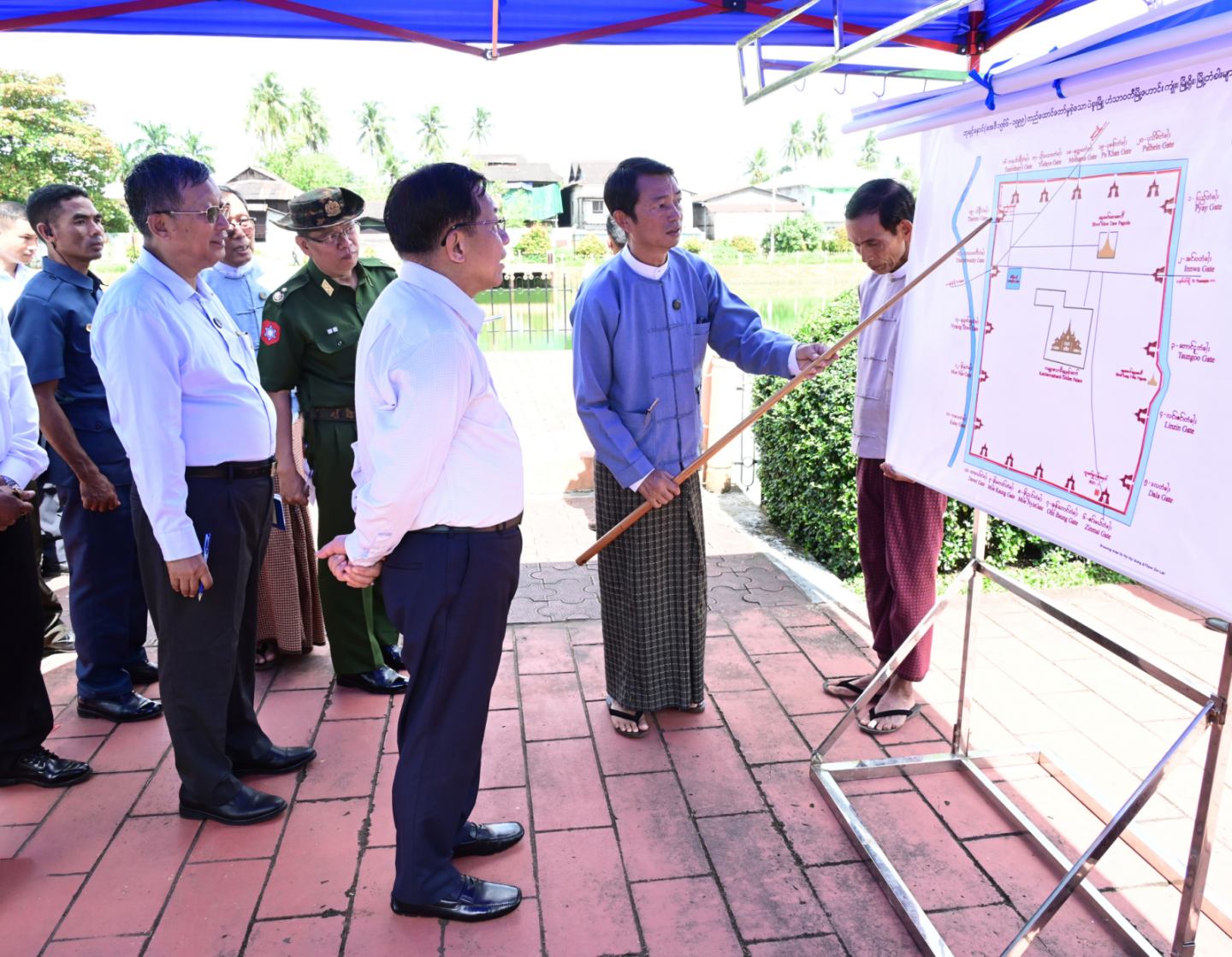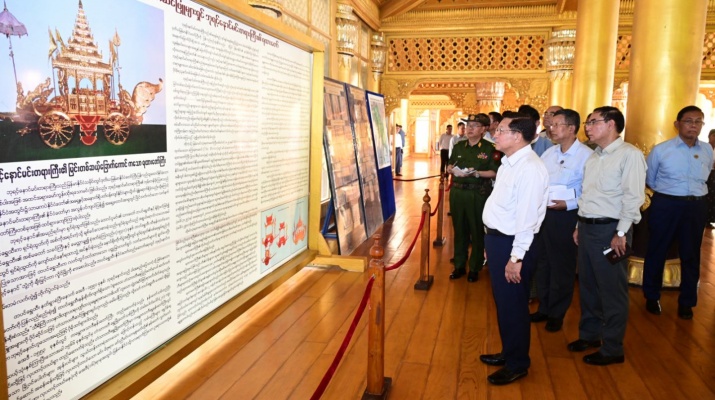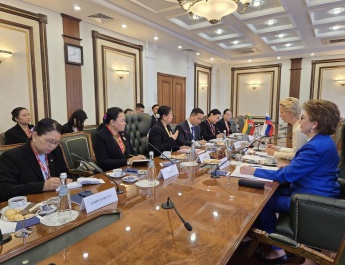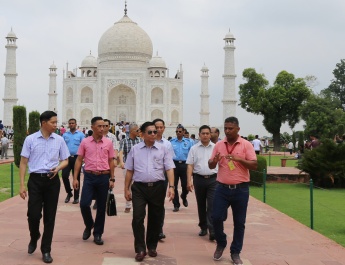NAY PYI TAW August 3
Chairman of State Security and Peace Commission of the Republic of the Union of Myanmar Senior General Min Aung Hlaing, accompanied by wife Daw Kyu Kyu Hla, Joint Chief Executive of the National Defence and Security Council General Ye Win Oo and wife, members of the entourage, the Bago Region Chief Minister and officials, inspected restoration and conservation of ancient cultural heritage of Kanbawzathadi Golden Palace in Bago today.
The Senior General and wife and party arrived at the palace and were conducted round the sites that displayed teak columns excavated from the place where the old royal audience hall was located, a painting of a royal ceremony in which respects were paid to the king, documentary photos of King Anawrahta’s Thirizeyabumi Golden Palace (Bagan period), King Bayintnaung’s Kanbawzathadi Golden Palace (Hanthawady period), King Alaungmintaya’s Shwebonyadana Mingala Golden Palace (Konbound period), and King Mindon’s Myanansankyaw Golden Palace (Yadanabon period) that were restored and reconstructed in accord with their original designs, progress in restoration and conservation of Kanbawzathadi Golden Palace, royal items of ancient Myanmar kings, conservation of royal audience hall, excavation of Kanbawzathadi Golden Palace by officials.
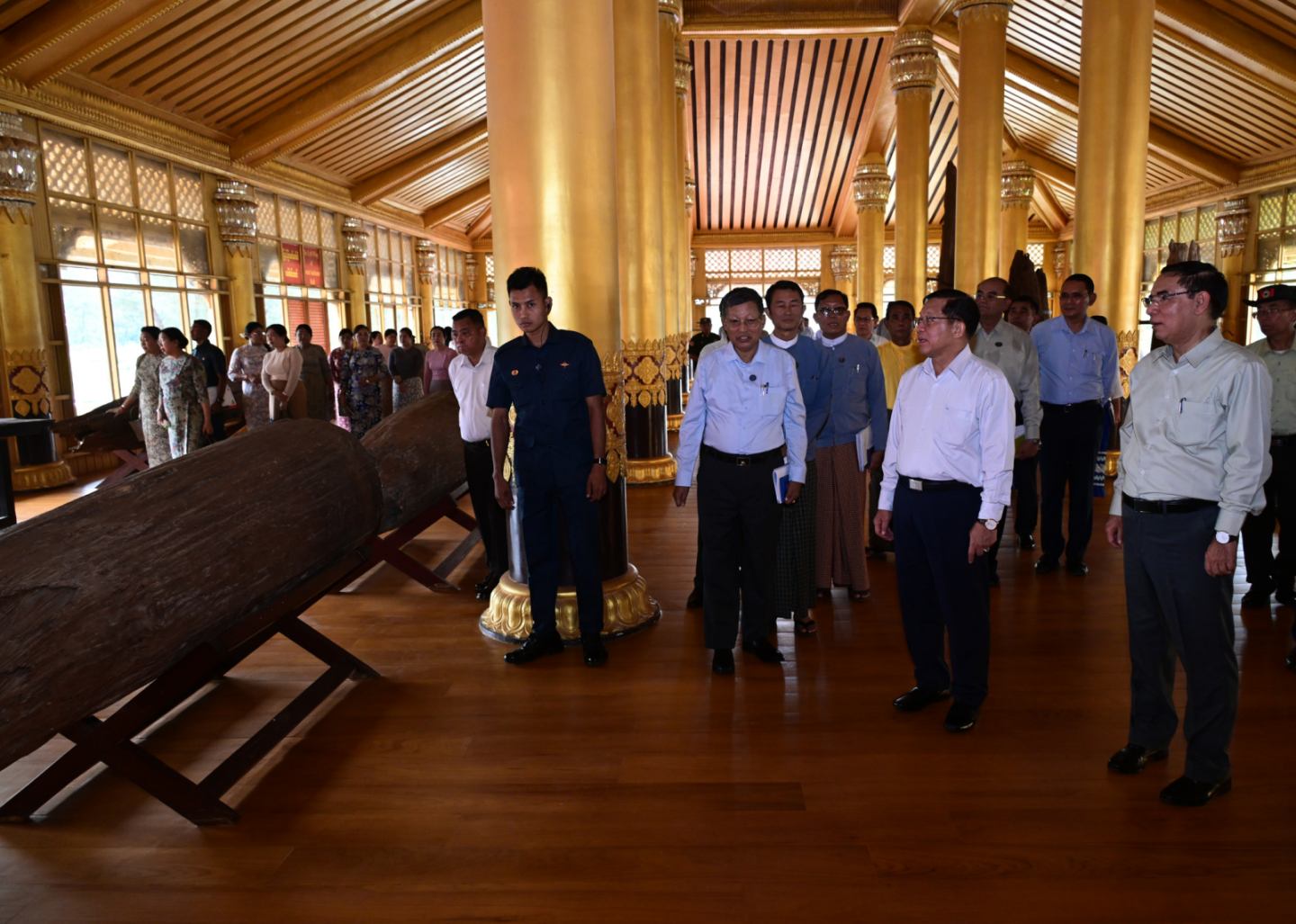
Regarding the presentations, the Senior General said ancient teak columns and ancient royal items displaced in the palace are invaluable historical heritages. Hence, every detail must be restored meticulously and handed over throughout the generations. Modern methods must be applied to produce high-resolution photos and quality paintings. Displays must clearly reflect the support provided to race, religion, traditions and culture and fine arts during the time of ancient Myanmar monarchs, their impressive royal palaces and their power and greatness. Kanbawzathadi Golden Palace must be under constant protection and conservation for its magnificence and pleasantness, and the Hanthawady old city must be also excavated. The entire moat of the Kanbawzathadi Golden Palace must be restored.
The Senior General and party then inspected the progress in rebuilding the 16-horse-drawn royal carriage of King Bayint-naung in its original style and gave necessary guidance.
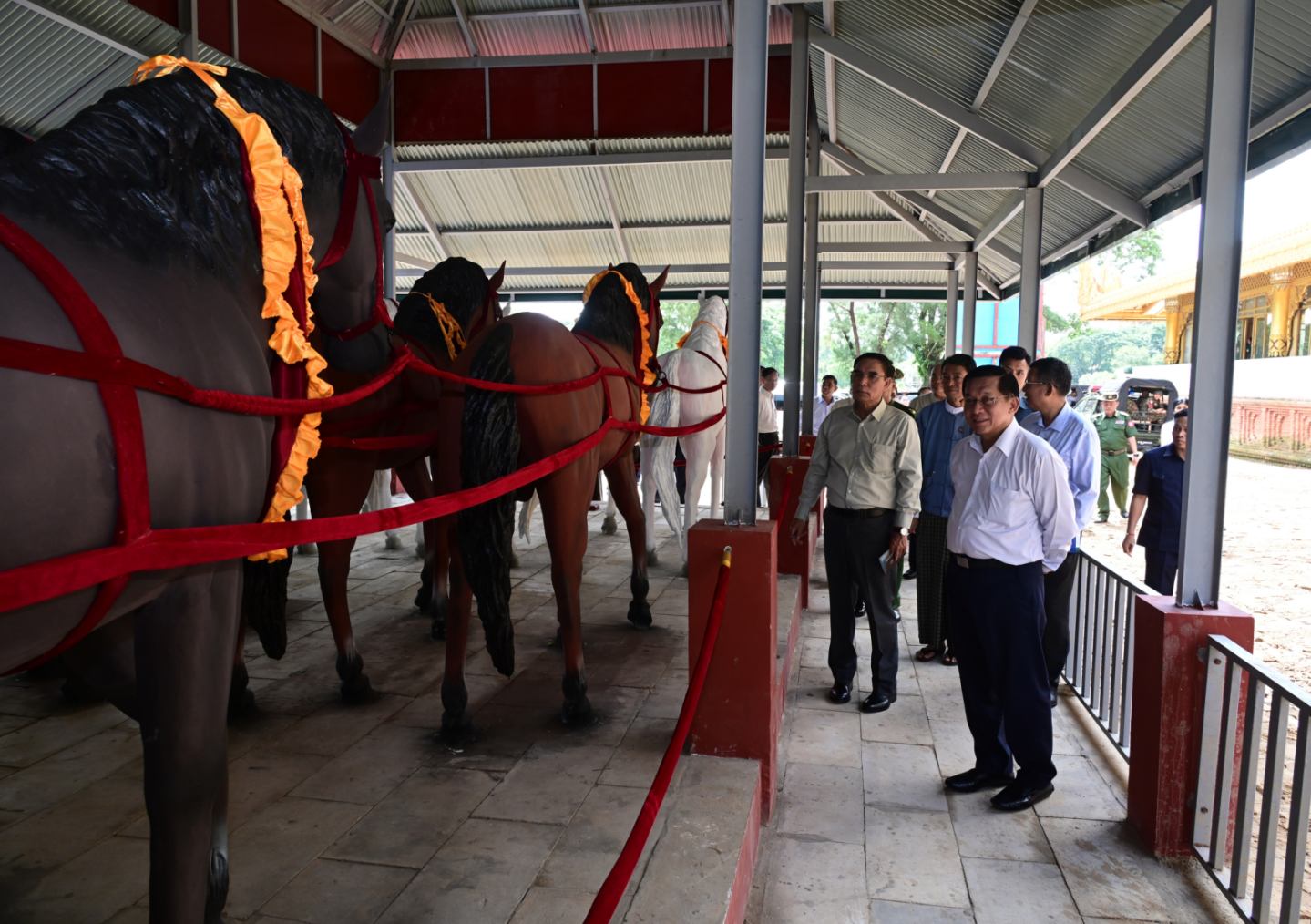
During the inspection of Theinni portcullis of the Hanthawady Wall, they heard a report on points of Bago, ancient Hanthawady, the mote and gates there are under restoration.
In response, the Senior General said the restoration of ancient cultural heritages amounts to arousing the patriotism of future generations. As they are noteworthy historical heritages, they must be restored with special care. The ancient moat circling the ancient Hanthawady must be restored and the Theinniportcullis must be erected and restored through modern methods. The environs of the moat should be turned into a peaceful and pleasant relaxing place for the public.
The Senior General and party looked around the Hanthawady Wall and areas along the moat and urban Bago in a motorcade, and gave instructions to ensure proper flow of Bago River, which passes through Bago, by erecting rock retaining walls.
In 915 ME (AD 1553) King Bayintnaung built a new grand palace, which had a floor area of 3400 square meters, 20 gates, five each at the sections facing different directions, and named it Kanbawzathadi Golden Palace. When the King passed away at the age of 66 in 943 ME (AD 1581), his son, Nanda, ascended the throne. During his reign, Hanthawady fell and the palace was burnt down. Department Archaeology conducted research on and excavation of the palace, which was buried under the rubbles for about 400 years, from the early 1990 to 1997. The excavation of the royal audience hall began on 13 December 1993 and found the brick foundations of the royal audience hall, connecting hall, and right-wing hall. Moreover, the excavators also found the remains of teak pillars and some had names of the providers. The royal audience hall, left-wing hall, right-wing hall and connecting hall were restored to their original designs based on the records of the excavated parts. The palace is now crowded with local and foreign visitors.
